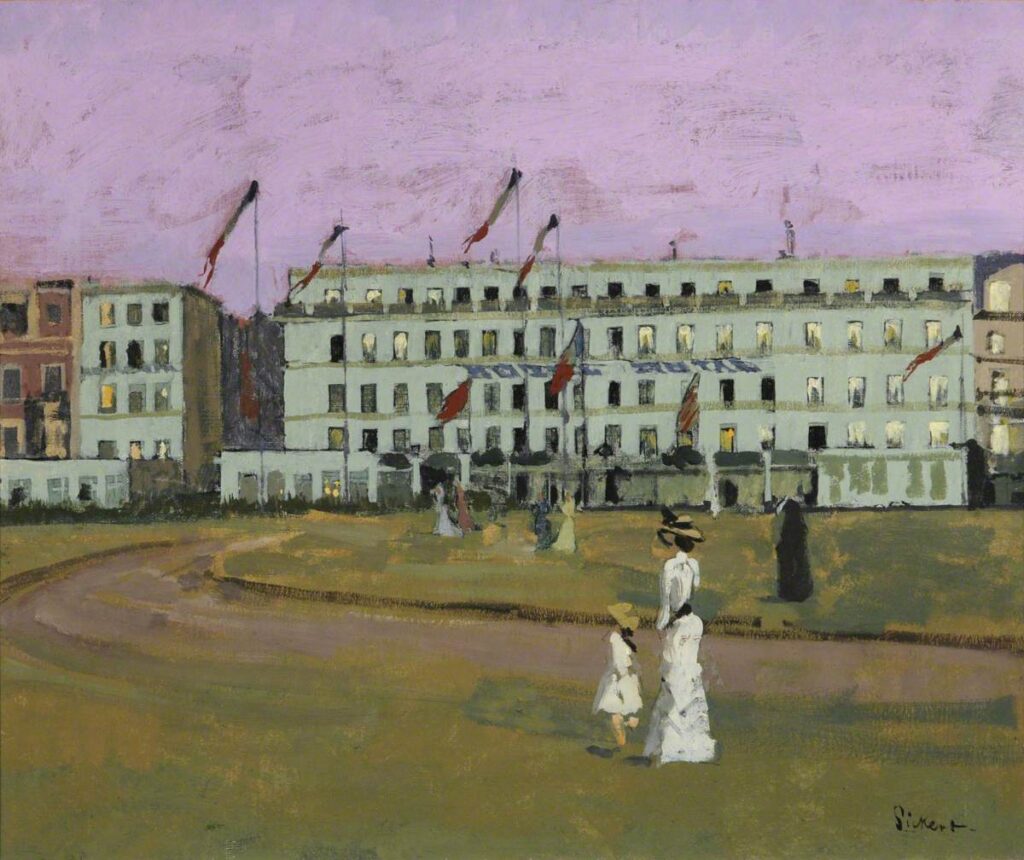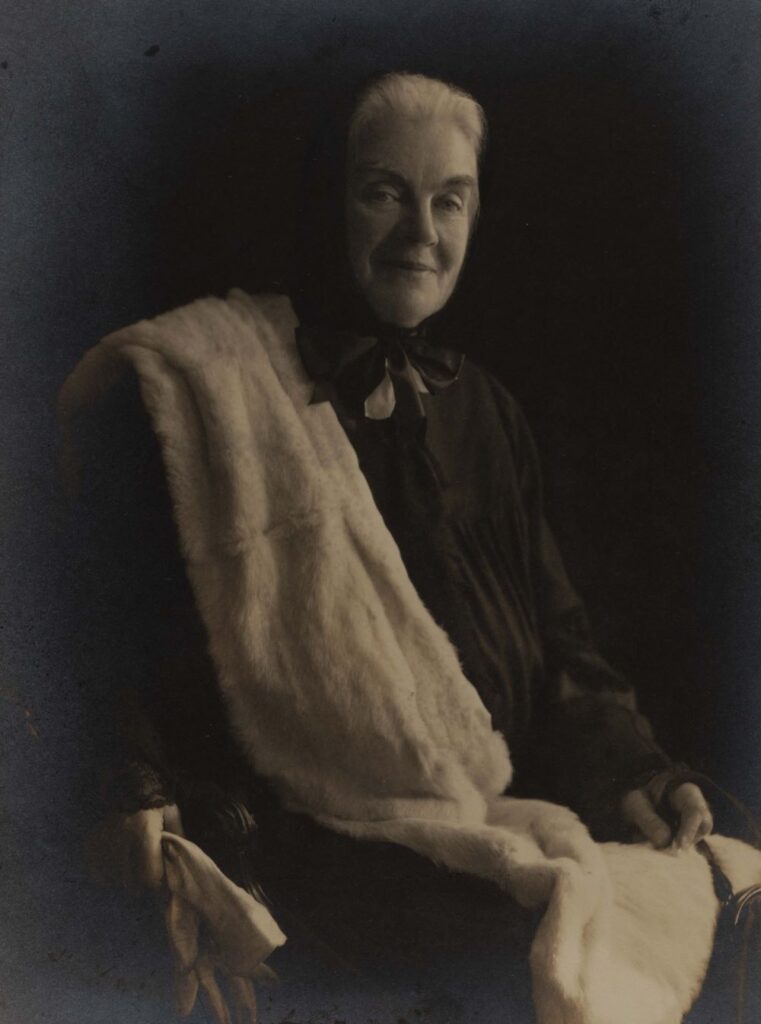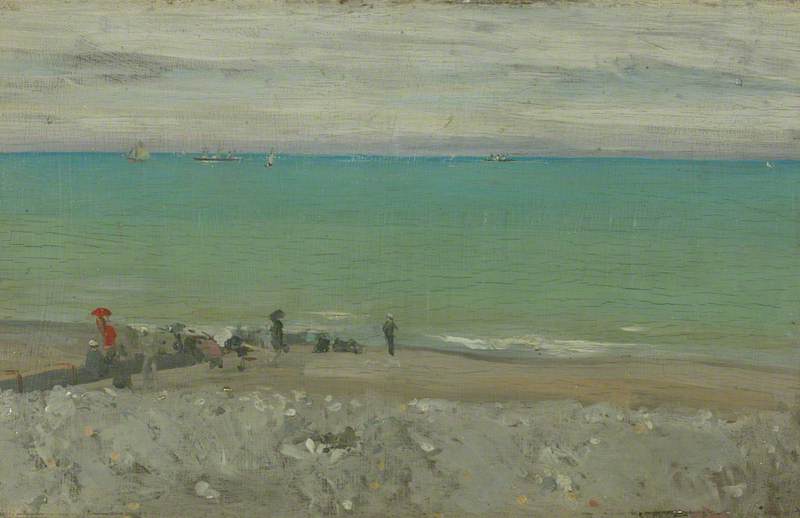One of the many revelations found among the papers of Anne Seagrim is a first-hand account of life for British ex-pats in Dieppe during the early twentieth century.
In the first instalment in a two-part blog, Churchill College By-Fellow Sharon Mather uncovers some of the famous figures who spent time in this French town, including the mother of Clementine Churchill.
Anne Seagrim’s parents, Cyril and Kathleen Seagrim had moved to Dieppe after his retirement from the Indian Police in 1914 in order to try their hand at farming. At the time there was a vibrant English community living in and around Dieppe attracted by the life-style and low cost of living in Normandy.
Her grandfather, Albert Seagrim, had moved there in 1881 and had purchased three small houses on the site of the Tour aux Crabes. In the largest of these he had established a crammer for young men who wished to prepare for entrance to the military academies at Woolwich or Sandhurst, or to university.[1] An Anglican chapel was built in the Rue de la Barre to serve the English community where Lord Salisbury[2], who had built a house in the nearby village of Puys, frequently attended services.
The seventy-five mile crossing from Newhaven in Sussex took five hours by steam ship. When the railway from Paris to Dieppe was completed in 1848 (built by a British company with British workers, some of whom also settled in Dieppe) the length of time it took to travel from London to Paris was greatly reduced, consequently visitor numbers increased.
The English visitors brought the craze for sea-bathing to Dieppe; hence the town became a fashionable seaside resort – a new Brighton. Alongside sea-bathing, casinos and golf became popular attractions. Finishing schools also sprang up in the town: young English ladies were sent to finish their education and polish their manners before coming out into society.
Well-known literary and artistic figures such as Arthur Symons, Oscar Wilde, Aubrey Beardsley and Max Beerbohm would spend the season in Dieppe, keen to pick up on the avant-garde trends in France. The painter, Walter Sickert, was fascinated by the town. He first visited Dieppe on his honeymoon and was a regular visitor for forty years and a resident from 1898 to 1905. He rented a room in one of the houses in the Tour aux Crabes to use as a studio and was Albert Seagrim’s tenant and neighbour. His paintings document everything from the architecture, the fishing harbour, shops and cafés, to the townspeople.

Another notable resident in the town was Lady Henrietta Blanche Ogilvy Hozier (1852-1925), the mother of Clementine Hozier who went on to marry Winston Churchill.
Blanche Hozier had earned a colourful reputation. She had married Henry Hozier in 1878, a divorcee, who was fourteen years her senior. Unlike Blanche, he was not of noble stock but he had enjoyed a brilliant military career and, in 1874, he had been appointed Secretary to the Corporation of Lloyds. It was not a great match, but her parents were relieved to see her married off for she was already in her mid-twenties and, although she was beautiful, she was also rebellious and capricious.
Blanche and Henry’s marriage was not a happy one. Henry Hozier had stated at the outset that he did not want children, whereas Blanche was deeply maternal. Blanche gave birth to her first child, Kitty, in 1883; followed by Clementine in 1885, and twins, Bill and Nellie, in 1888.
According to Winston and Clementine Churchill’s daughter, Mary Soames, ‘it is extremely unlikely that Henry Hozier was the father of all – or indeed any – of these children’.[3] Blanche was promiscuous and had several lovers, among their number: Wilfrid Scawen Blunt and her brother-in-law, Algernon Bertram Freeman-Mitford, 1st Baron Redesdale. It is widely believed that the latter was Clementine’s biological father. In 1891 Hozier threatened Blanche with divorce but she retaliated by citing his own infidelities; instead, they separated.

The social stigma attached to Blanche Hozier after the separation, exacerbated by her lack of money, forced her and her children to lead a peripatetic lifestyle; they either stayed in rented furnished accommodation or with willing relatives. In 1899 she decided to move her family to Dieppe. Initially they enjoyed an idyllic time immersed in ‘La Colonie’, but their happiness ended abruptly when, in February 1900, Kitty fell ill with typhoid and tragically died, a month short of her seventeenth birthday. Blanche was devastated and returned to England. A few years later she went back to live in Dieppe.
Enigmatic and eccentric, she was regarded by the other residents with ‘a mixture of pride and alarm’. They marvelled at her individual style of dress, which included a ‘white mantilla and pussy-cat bow of gentian silk’. She drove a hard-bargain with shopkeepers and market traders (who were terrified of her), and her propensity for gambling was well-known. She was also ‘capable of emptying buckets of slops from her balcony upon any passer-by she did not fancy’. She would keep watch on her neighbours from her window and she had trained her dog to ‘lift its leg, at a word, against the skirts or trousers of her enemies.’[4] She died on 28 March 1925 and was buried in the Janval Cemetery.
[1] Simona Pakenham, 60 Miles from England: The English at Dieppe 1814 – 1914, (London: Macmillan, 1967), pp.142-143.
[2] Robert Arthur Gascoyne-Cecil, 3rd Marquess of Salisbury (b. 3 February 1830, d. 22 August 1903), British Prime Minister from 25 June 1895 to 11 July 1902.
[3] Winston and Clementine Churchill, (ed., Mary Soames), Speaking For Themselves: The Personal Letters of Winston and Clementine Churchill (London: Doubleday, 1988), p.3.
[4] Simona Pakenham, 60 Miles from England: The English at Dieppe 1814 – 1914, (London: Macmillan, 1967), pp.204-205.
By Sharon Mather, Churchill College By-Fellow and Author of Edward Marsh: A Life of Poets, Painters and Players, 2023.
Top image: Dieppe by Walter Richard Sickert, Manchester Art Gallery.


